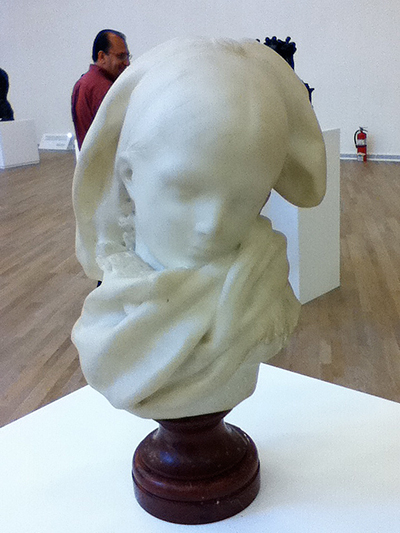This delightful sculpture came relatively early in Rodin's career and was based on the fashion of a region of Northern France during the mid to late 19th century.
This piece is a bust sculpture of a young girl with her face angled to the side. There is an innocence to her features as well as an expression which points to a troubling environment. She wears a small veil which was intended to replicate the silk ones adorned by many girls and women within the region of Alsace. The sculptor found success with this design and would produce marble and terracotta versions of it. These are known to have been exhibited as early as 1871 and many consider this to be an important sculpture within the artist's early development. Several of the different versions still remain today and continue to be exhibited to different art institutions from time to time, with the sculptor's name still being particularly highly regarded by the public.
We do know that the piece was initially completed in 1871 and therefore exhibited pretty much immediately. Rodin was producing a number of similar pieces such as this between the years of 1871-1875, as outlined by the Musee Rodin who own one of the versions of this sculpture. We also know that it proved particularly popular when put on display in 1874 in Brussels, thanks to the exhaustive information provided by the museum about this artist's career, featuring not only his own correspondence but also many newspaper articles which discussed his work. The item held in the museum today is sized at 29cm by 23cm by 17cm and whilst being a popular piece within his career, less is known about it than others because it arrived fairly early on in his career.
L'Orpheline Alsacienne, to use it's original French title, is an important work with a level of charm that understandably helped it to promote Rodin's growing reputation. He would go on to become one of the most influential artists in history and left behind a legacy within sculpture that was full of innovation and creativity. He helped to modernise this art form and make it palatable for new audiences within France and indeed further afield. His best work continues to be discussed and praised in the present day and the museum in his name helps to keep him relevant.




